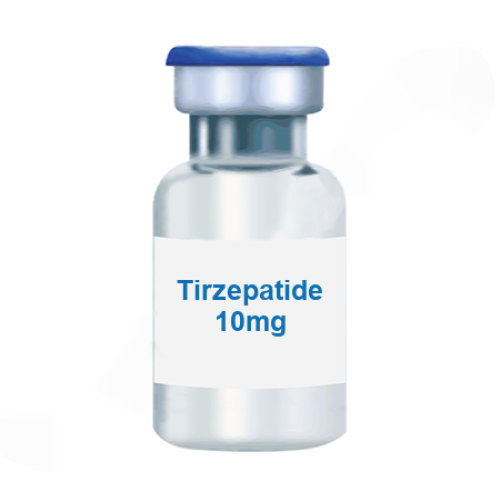Tirzepatide 10mg
- Brand: U.S. Made Peptides
- Product Code: Tirzepatide 10mg
- Availability: In Stock
-
$100.00
Manufacturer: U.S. Made Peptides
Pharmaceutical name: Tirzepatide
Pack: 1 vial (10 mg)
Tirzepatide is a receptor agonist for glucose-dependent insulinotropic polypeptide (GIP) and glucagon-like peptide-1 (GLP-1), and it has received FDA approval for the treatment of type 2 diabetes mellitus. It should be emphasized that tirzepatide is not authorized for use in type 1 diabetes mellitus and has not been evaluated in individuals with pancreatitis. This medication enhances glycemic control significantly in individuals with type 2 diabetes and contributes to considerable weight loss.
Tirzepatide can also be utilized off-label for obesity treatment. It is presently used as a second-line therapy for diabetes, akin to other GLP-1 medications like semaglutide. Administered as a subcutaneous injection once a week, it involves gradual dose adjustments.
Tirzepatide is a synthetic peptide that acts as a dual agonist for gastric inhibitory polypeptide (GIP) and glucagon-like peptide 1 (GLP-1) receptors. This peptide is made up of 39 amino acids and is similar to gastric inhibitory polypeptide. It functionally promotes insulin secretion from the pancreas, reducing hyperglycemia. Furthermore, tirzepatide also elevates adiponectin levels. Its dual action results in a more significant decrease in hyperglycemia compared to using GLP-1 agonists alone, while also curbing appetite.
Pharmacokinetics:
Absorption: Tirzepatide exhibits a bioavailability of about 80%, with peak serum levels achieved between 8 and 72 hours.
Distribution: The mean apparent steady-state volume of distribution (Vd) for tirzepatide is around 10.3 L, and it is highly bound to plasma albumin (99%).
Metabolism: After injection, its peptide structure experiences proteolytic cleavage, while the C20 fatty diacid component undergoes beta-oxidation and amide hydrolysis.
Excretion: Tirzepatide has a half-life of 5 days, which supports once-weekly dosing, and is excreted in urine and feces as metabolites.

